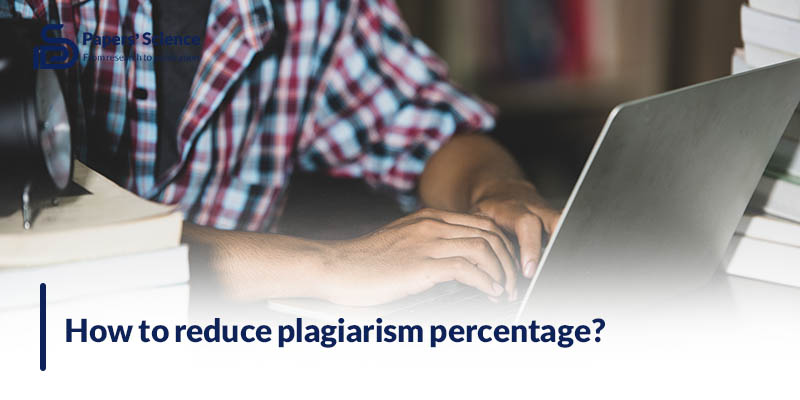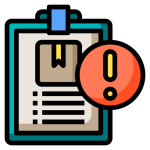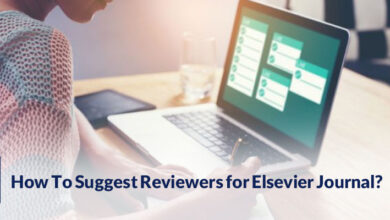How to Reduce Plagiarism Percentage?

If you are a scientist or academic, you know how important it is to conduct original research.
So, the possibility of plagiarism constantly threatens the credibility of your work in the world of scientific publishing.
Because it is a crucial concern for academics committed to upholding the highest standards of integrity.
In this essay, we want to explore practical approaches that help you learn how to reduce plagiarism in your papers.
Why is it important to have a lower plagiarism percentage in your papers?
Maintaining a low plagiarism percentage in your papers is paramount for several reasons:
· Firstly, it upholds the fundamental principles of academic integrity. When we engage in research and scholarship, we aim to contribute original insights to our respective fields. Plagiarism undermines this pursuit by misrepresenting someone else’s work as our own. Striving for a lower plagiarism percentage, you can reaffirm your commitment to honesty and intellectual honesty.
· Secondly, reducing plagiarism safeguards our reputation as scholars. Institutions and peers value the authenticity of our contributions. A high plagiarism percentage can cast doubt on the legitimacy of our work, eroding trust within the academic community. Furthermore, plagiarism can have severe consequences, including academic penalties and damage to professional prospects. It jeopardizes the very essence of learning and knowledge dissemination.
In contrast, a lower plagiarism percentage ensures that our work stands on a solid ethical foundation, fostering credibility, trust, and the advancement of knowledge.

Strategies for reducing plagiarism percentage
Below, we have provided 3 strategies that can help you reduce plagiarism percentages:
1. Paraphrasing & summarizing
Effectively employing paraphrasing techniques is a cornerstone in the battle against plagiarism. When we paraphrase, we rephrase the original text using our own words while maintaining the essence of the idea.
This not only highlights our understanding but also ensures the work’s originality. Mastery of paraphrasing involves careful consideration of sentence structure, word choice, and context.
If you skillfully reshape the content, you can avoid verbatim replication and still convey the core message.
It is a creative skill that prevents plagiarism and enhances our ability to communicate complex concepts uniquely and engagingly.
2. Proper note-taking
Sound note-taking is an invaluable tool in the fight against unintentional plagiarism. It involves diligently recording sources, quotations, and ideas during research.
This practice helps us keep track of our sources and ensures we attribute ideas correctly. When we meticulously document our sources, we create a robust paper trail demonstrating our commitment to academic honesty.
Proper note-taking serves as a safeguard, allowing us to verify the origins of information and maintain the integrity of our work.
3. Using plagiarism detection tools
In the digital age, plagiarism detection tools have become indispensable allies in maintaining originality. These tools scan our work against vast databases, flagging any similarities to existing content.
Using such technology is a proactive step in avoiding accidental plagiarism, offering us a safety net to review and amend our work before submission.
Read More: How many papers should I publish per year?
What should you do if your plagiarism percentage is high?

Discovering a high plagiarism percentage in your work can be disheartening, but addressing the issue promptly and effectively is essential.
Here are steps to take to reduce plagiarism percentage:
· Review & identify sources
Begin by thoroughly reviewing your paper and identifying the sources contributing to the high plagiarism percentage. Note any passages or quotations that may not have been adequately cited.
· Rephrase & cite
For passages flagged as potential plagiarism, rephrase them in your own words while ensuring proper citation. This rectifies the issue and showcases your understanding of the material.
· Seek guidance
Do not hesitate to contact professors, mentors, or writing centers for guidance. They can provide valuable insights into citation styles and proper attribution.
· Use plagiarism detection tools.
Rerun your work through plagiarism detection tools to ensure that your revisions have effectively reduced the plagiarism percentage.
· Learn & improve
Use this experience as a learning opportunity to enhance your research and writing skills. Understand the importance of proper citation and the consequences of plagiarism.
· Maintain a revision log.
Keep a log of all revisions to your paper to demonstrate your commitment to rectifying the issue.
Conclusion
In conclusion, the battle against plagiarism is vital for scholars and academics. It is not just about avoiding penalties but upholding the essence of academic integrity.
By learning how to reduce plagiarism, you can safeguard the credibility of our work and contribute to the scholarly community’s trust and progress.

We are curious to hear from you: What are your experiences with plagiarism, and do you have additional tips to share? Please feel free to comment.



